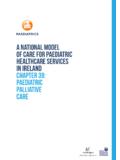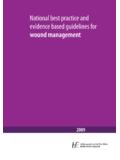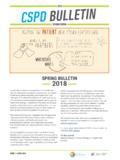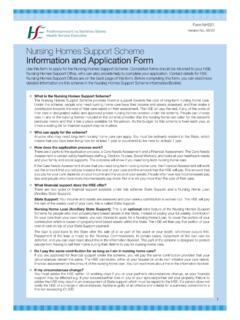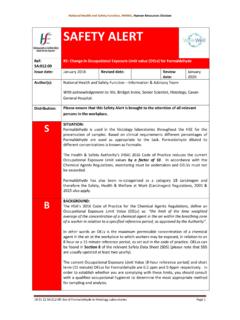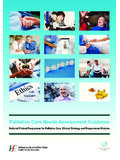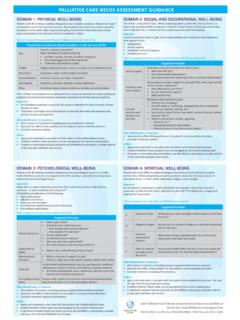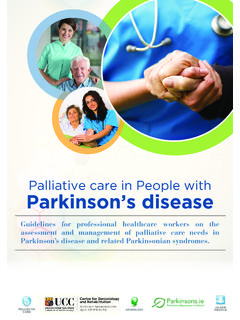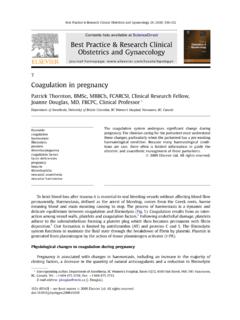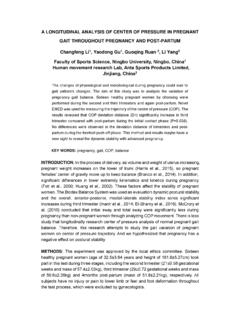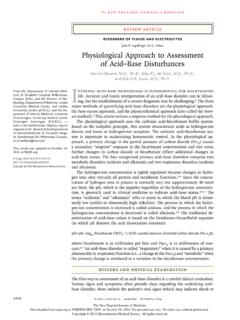Transcription of CLINICAL PRACTICE GUIDELINE Bacterial Infections …
1 CLINICAL PRACTICE GUIDELINE Bacterial Infections specific TO pregnancy CLINICAL PRACTICE GUIDELINE Bacterial Infections specific to pregnancy Institute of Obstetricians and Gynaecologists, Royal College of Physicians of Ireland and the National CLINICAL Programme in Obstetrics and Gynaecology Version Date of publication: February 2015 GUIDELINE No. 34 Revision date: February 2018 CLINICAL PRACTICE GUIDELINE Bacterial Infections specific TO pregnancy 2 Contents 1. Revision History .. 3 2. Key Recommendations .. 4 3. Purpose and Scope .. 5 4. Background and Introduction .. 5 5. 9 6. CLINICAL guidelines on pregnancy - specific Infections .. 10 7. References .. 19 8. Implementation 24 9. Key Metrics .. 24 10. Qualifying Statement .. 24 11. Glossary of Terms and Abbreviations .. 25 12. Appendices .. 26 CLINICAL PRACTICE GUIDELINE Bacterial Infections specific TO pregnancy 3 1.
2 Revision History Version No. Date Modified By Description CLINICAL PRACTICE GUIDELINE Bacterial Infections specific TO pregnancy 4 2. Key Recommendations 1. The Irish Maternity Early Warning System (IMEWS) with the customised Sepsis 6 Tool should be used to monitor women admitted to the maternity wards ( ). 2. Staff need to be particularly vigilant about the risk of infection following rupture of the amniotic membranes and/or during the peripartum period. 3. Appropriate microbiological cultures should be taken before commencing the recommended antibiotic regimen. 4. If an infection is suspected, appropriate antibiotics should be administered ideally within one hour without awaiting the results of microbiological cultures. 5. The dose of some drugs, such as gentamicin, is based on weight. It is recommended that the woman is weighed accurately at her first antenatal visit.
3 The dosage is based on this weight and not her weight at the time of antibiotic administration because weight gained during pregnancy is mainly water. 6. If a woman has already developed an infection, therapeutic antibiotics and not prophylactic antibiotics are required. 7. Even in cases where the source of the pregnancy - specific infection appears clear, consideration should be given to taking a blood culture if a pyrexia 38 C persists because of the risk of associated bacteraemia. 8. The development of fetal heart rate abnormalities in women at risk of infective chorioamnionitis should raise concerns because it suggests that the fetus has become infected. 9. If a diagnosis of chorioamnionitis is suspected, treatment with antibiotics should be started as a matter of urgency once microbiological samples have been taken. 10. In cases of suspected chorioamnionitis, microbiological culture of the fetal and maternal aspects of the placenta/membranes is recommended.
4 Histological examination of the placenta and umbilical cord is also recommended. 11. If a woman presents postpartum with symptoms and signs suggestive of a perineal infection, close vaginal inspection should be accompanied by microbiological culture. With the woman s consent, careful vaginal and rectal examination should be performed so that abnormalities such as fistula formation are identified. 12. When a breast abscess is suspected clinically, an ultrasound examination should be considered because it may identify multiple abscesses. 13. In women with an inflammatory breast mass that persists despite appropriate antibiotics, the possibility of a breast tumour should be considered and the woman referred urgently to a specialist breast clinic. 14. Should a woman with a presentation strongly suggestive of maternal infection demonstrate signs of sepsis as evidenced by the presence of the systemic inflammatory response syndrome customised for pregnancy , it is imperative that the National CLINICAL GUIDELINE : Sepsis Management is followed ( ).
5 CLINICAL PRACTICE GUIDELINE Bacterial Infections specific TO pregnancy 5 3. Purpose and Scope The purpose of this GUIDELINE is to improve the prevention and management of pregnancy - specific Bacterial Infections . The GUIDELINE is intended for healthcare professionals, particularly those in training, who are working in HSE-funded hospitals and primary care. It is designed to guide CLINICAL judgement but not replace it. In individual cases a healthcare professional may, after careful consideration, decide not to follow the GUIDELINE if it is deemed to be in the best interests of the woman or her offspring. This GUIDELINE is not intended to comprehensively address antibiotic prophylaxis in obstetrics. It is intended to develop a suite of guidelines covering Infections exacerbated by pregnancy in the next phase of this work. Existing and relevant national guidelines and reports on infection in pregnancy are listed in Appendix One.
6 4. Background and Introduction Concern about maternal death due to sepsis has re-emerged in developed countries. In Ireland, there have been concerns about individual maternal deaths, and in the United Kingdom (UK) the last triennial Confidential Enquiry into maternal deaths reported an increase in direct maternal deaths due to sepsis, mainly from community-acquired group A beta-haemolytic streptococcus infection after delivery (GAS or Streptococcus pyogenes) (Cantwell et al., 2011). In the United States of America, rates of maternal sepsis have been stable but rates of sepsis-related maternal deaths in hospital have increased (Bauer et al., 2013). Consequently, national sepsis management guidelines were written and endorsed by the National CLINICAL Effectiveness Committee (NCEC) in November 2014 ( ). However, in order to help prevent sepsis in the maternity setting, the focus of this GUIDELINE is on the primary infection, specifically the prevention and management of pregnancy - specific Bacterial Infections .
7 Classification While pregnant women are generally healthy, they are at risk of developing the same Infections as the non-pregnant adult. In addition, their risk from some Infections may be exacerbated by pregnancy or women may develop Infections that are specific to pregnancy (Table 1). Any one or more of these Infections may progress to sepsis. The pregnancy - specific Infections include chorioamnionitis, endometritis (with or without retained products of conception), perineal Infections , wound Infections and lactational mastitis. Delayed or inappropriate treatment of these Infections may lead to bacteraemia or to sepsis and, subsequently, death. What all these Infections have in common is that they are strongly associated with a breach in the woman s physical integrity, which is most likely to occur near the time of delivery. In the case of chorioamnionitis and endometritis, rupture of the amniotic sac and/or dilatation of the internal cervical os exposes the normally sterile uterine cavity to the normal vaginal microflora.
8 In the case of perineal, wound and breast Infections it is strongly associated with traumatic breakdown of the protective skin or vaginal wall. CLINICAL PRACTICE GUIDELINE Bacterial Infections specific TO pregnancy 6 Table 1: Classification of Infections and pregnancy (Turner, 2014) A. Infections specific to pregnancy 1. Chorioamnionitis 2. Endometritis (with or without retained products of conception) 3. Wound infection post caesarean section 4. Perineal infection 5. Lactational mastitis B. Infections exacerbated during pregnancy , for example, 1. Urinary tract infection, including pyelonephritis 2. Pneumonia 3. Rubella 4. Listeria 5. Influenza 6. Varicella 7. Toxoplasmosis 8. Herpes infection 9. Parvovirus 10. Cytomegalovirus (CMV) C. Infections incidental to pregnancy , for example, 1. Viral hepatitis 2. Human Immunodeficiency Virus (HIV) 3. Sexually Transmitted Diseases (STDs) 4.
9 Tuberculosis 5. Endocarditis Chorioamnionitis is the most challenging of the pregnancy - specific Infections . It is strongly associated with spontaneous rupture of the membranes and cervical dilatation. However, the site of infection is not visible and direct microbiological cultures are not feasible. The CLINICAL evidence to support the diagnosis may be florid or extremely subtle. Chorioamnionitis may be defined clinically, histological or microbiologically (Tita and Andrews, 2010). Both inflammatory biomarkers and the white cell counts used for the early diagnosis of infection are altered physiologically by pregnancy (Carlin and Alfirevic, 2008). The pharmacokinetics of antibiotics during pregnancy may be greatly altered and, finally, consideration may have to be given to the fetal interest. Similar challenges occur with endometritis except that consideration may also have to be given to the diagnosis and management of retained placental products.
10 With both chorioamnionitis and endometritis the exposure of the vascular placental bed to colonies of vaginal microorganisms may lead quickly to maternal bacteraemia, which may be hard to evaluate because of the physiological changes in the woman s vital signs. CLINICAL PRACTICE GUIDELINE Bacterial Infections specific TO pregnancy 7 In contrast, perineal, wound and breast Infections are easier to diagnose and manage. The site of infection is usually reddened, painful, swollen and visible. The site is easily accessible for microbiological culture. The infection is usually contained and, if treated appropriately, does not lead to maternal bacteraemia. These Infections present after delivery when the physiological changes of pregnancy have started to return to normal. The white cell count also starts to normalise and, more importantly, the pharmacokinetics of antibiotics starts to normalise making sub-therapeutic drug levels less likely postpartum.
